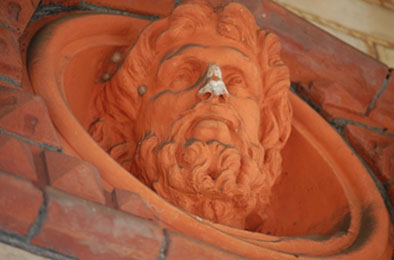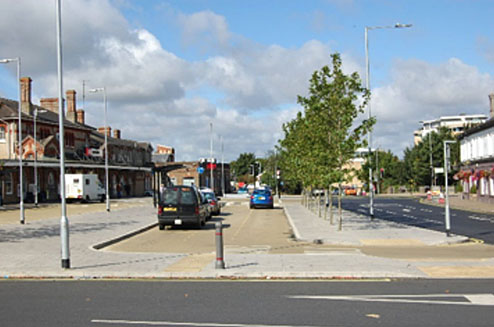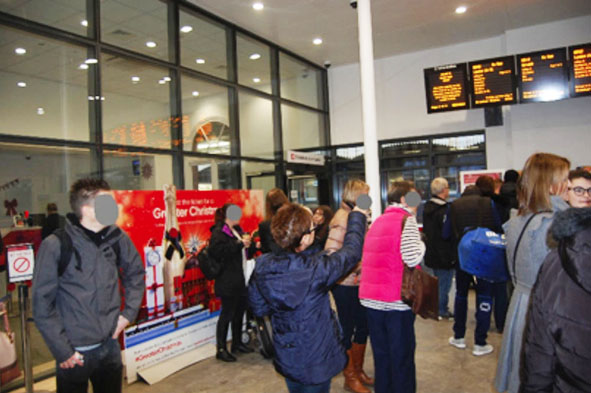- Screen Colours:
- Normal
- Black & Yellow
Ipswich railway stations, Part 2: Ipswich Station (1860)
[Part 1 of this article appeared in the Ipswich Society Newsletter August 2020 (Issue 222).]
In 1846 the Eastern Union Railway (EUR) and the Ipswich and Bury Railway (I and BR) had already decided that running trains into Croft Street terminus was only a temporary situation. They planned a new joint station at the north end of the tunnel. Croft Street Station would then be closed.
To that end; the EUR engineer, Peter Schuyler Bruff, set up a competition among architects to design the new station. Nineteen entries were received and Sancton Wood was the successful candidate. He submitted two designs; one was an Elizabethan and the other an Italianate style of building.
Sancton Wood had trained with Sir Robert and Sidney Smirke in London. The latter had gained some fame by designing the spectacular circular reading room in the British Museum in 1857. Mr Wood had already designed the rebuild of Bishopsgate Station for the Eastern Counties Railway.
The joint board chose Wood’s Italianate design but shortage of money prevented it from being built at that stage. It was not until 1858, when the I and BR had been absorbed into the EUR, that work commenced. The station was eventually completed and opened in 1860.

For over twenty years there was no island platform. It was finally opened in 1883, the latter now accommodating platforms three and four. Many people board trains from the island platform but have never noticed the heads of the gods which decorate the outside of the upper walls of the waiting rooms here. I counted sixteen in all.
Photo 1: Head of a god on the island platform waiting room building. All photographs by M R Russen.
(More about the heads in The Ipswich Society Newsletter, January 2020, Issue 218.)
To the west of the island platform were the carriage sidings, known from time immemorial as the ‘found out.’ I can find no-one who now knows why the area gained this appellation – it seems to be lost in the mists of time. This area latterly has been used as a parking and refuelling area for Freightliner container traffic locomotives; the powerful Class 66’s, rumbling away as they wait for their turn.
Before we move to the exterior of the station: there is an apocryphal story concerning one of the early stationmasters at Ipswich. Stoke Hill tunnel has always had a problem with water trickling its way through the hill, trying to make their way to the Rivers Gipping and Orwell but much of the water enters the tunnel via the roof. The story goes that this worthy railway official would send one of his young porters into the tunnel to top up his whisky tot from the dripping spring water. Much better than ordinary tap water.
Back to the main story - The station when first built had a wide concourse area in front of the building with a section for horse-drawn cabs on the right-hand side of the station as you faced it from the road. The whole area in front of the station became more and more cluttered with street furniture and traffic as the twentieth century advanced. Interestingly the roofline of the building has not changed much at all since 1860.

Photo 2: The cluttered area in front of the station in 2011
In 2017 work was carried out re-organising and upgrading this area. The work took much longer than anticipated but is an improvement generally.

Photo 3: the new look area in front of the station in September 2017
One problem did emerge after the work was completed. The taxi rank can be seen in Photo 3. In the original design, the path alongside Burrell Road, was to be much narrower and with no trees. The widening of this path, in order to include the avenue of trees, upset the taxi drivers because it narrowed the taxi rank roadway. This gave them problems particularly with loading and unloading wheelchairs etc. They were particularly upset because, apparently, they were not consulted on the change.
The interior of the station has also been completely remodelled.

Photo 4: Station building interior 2011 (Before the changes)
Now in 2020 with brand new motive power on the line; along comes the lockdown. One wonders whether the new ‘working from home’ practice will decimate the commuter traffic on the line. We are now in completely new and unknown territory… in every walk of life.

Photo 5: The new glass-walled booking hall in 2017.
Merv Russen